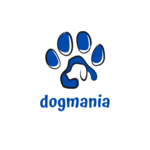Grain-Free vs. Grain-Inclusive: Making the Right Choice for Your Pet
Choosing the right diet for your pet is a crucial decision that can significantly impact their overall health and well-being. One of the most debated topics in pet nutrition is whether to feed a grain-free or grain-inclusive diet. Both options have their proponents and critics, and the best choice often depends on your pet’s specific needs. This article will explore the differences between grain-free and grain-inclusive diets, their benefits and drawbacks, and how to make the right choice for your pet.
Understanding Grain-Free Diets
What is a Grain-Free Diet?
A grain-free diet excludes grains such as wheat, corn, rice, barley, and oats. Instead, these diets often include alternative carbohydrate sources like potatoes, sweet potatoes, peas, and lentils.
Benefits of Grain-Free Diets
1. Allergy Management: Some pets are allergic or sensitive to grains. A grain-free diet can help manage food allergies and alleviate symptoms such as itching, digestive issues, and ear infections.
2. Improved Digestion: Grain-free diets can be easier to digest for some pets, particularly those with sensitive stomachs or specific dietary intolerances.
3. Weight Management: Grain-free foods can aid in weight management for overweight pets, as they often contain higher protein levels and fewer carbohydrates.
Drawbacks of Grain-Free Diets
1. Nutritional Balance: Not all grain-free diets are created equal. Some may lack essential nutrients if not properly formulated.
2. Cost: Grain-free diets tend to be more expensive than grain-inclusive options.
3. Potential Health Risks: Recent studies have suggested a potential link between grain-free diets and a heart condition called dilated cardiomyopathy (DCM) in dogs, although research is ongoing.
Understanding Grain-Inclusive Diets
What is a Grain-Inclusive Diet?
A grain-inclusive diet contains grains such as wheat, corn, rice, barley, and oats. These diets have been a staple in pet nutrition for many years and are often formulated to provide a balanced mix of proteins, fats, and carbohydrates.
Benefits of Grain-Inclusive Diets
1. Nutritional Completeness: Grain-inclusive diets are typically formulated to meet all the nutritional needs of pets, providing a balanced mix of essential nutrients.
2. Cost-Effective: Grain-inclusive diets are generally more affordable than grain-free options, making them a budget-friendly choice for many pet owners.
3. Proven Track Record: These diets have been fed to pets for decades, and many animals thrive on them without any issues.
Drawbacks of Grain-Inclusive Diets
1. Allergies and Sensitivities: Some pets may be allergic or sensitive to grains, leading to digestive issues, skin problems, and other health concerns.
2. Potential for Weight Gain: Grain-inclusive diets can be higher in carbohydrates, which may contribute to weight gain if not carefully managed.
Making the Right Choice for Your Pet
Consider Your Pet’s Health and Lifestyle
When deciding between a grain-free and grain-inclusive diet, consider your pet’s specific health needs, lifestyle, and any known allergies or sensitivities. Here are some factors to keep in mind:
1. Age and Activity Level: Puppies, kittens, and highly active pets may require different nutritional profiles than older or less active animals.
2. Health Conditions: Pets with certain health conditions, such as allergies, diabetes, or digestive issues, may benefit from one type of diet over the other.
3. Breed: Some breeds are more prone to certain health issues that can be managed through diet.
Consult Your Veterinarian
Your veterinarian is a valuable resource when it comes to choosing the right diet for your pet. They can provide personalized recommendations based on your pet’s health history, current condition, and nutritional needs. Regular check-ups and discussions about diet are essential to ensure your pet remains healthy and happy.
Gradual Transition
If you decide to switch your pet’s diet, do so gradually to avoid digestive upset. Start by mixing a small amount of the new food with the old food and gradually increase the proportion of the new food over a week or more. This slow transition helps your pet’s digestive system adjust and reduces the risk of gastrointestinal issues.
Monitor Your Pet’s Response
After switching to a new diet, closely monitor your pet for any changes in behavior, coat condition, energy levels, and overall health. Look for signs of improved well-being, such as increased energy, a shinier coat, and healthy digestion. Conversely, watch for any adverse reactions, such as itching, digestive issues, or lethargy, and consult your veterinarian if you have concerns.
Conclusion
Choosing between a grain-free and grain-inclusive diet for your pet is a significant decision that should be based on their individual needs and health conditions. Both types of diets have their benefits and drawbacks, and what works best for one pet may not be suitable for another. By considering your pet’s specific requirements, consulting your veterinarian, and monitoring their response to the diet, you can make an informed decision that supports your pet’s health and happiness.
Remember, the key to a healthy diet is balance and quality, regardless of whether it includes grains. Prioritize high-quality ingredients and ensure that your pet receives all the essential nutrients they need for a long, healthy life.



leave me your thoughts here